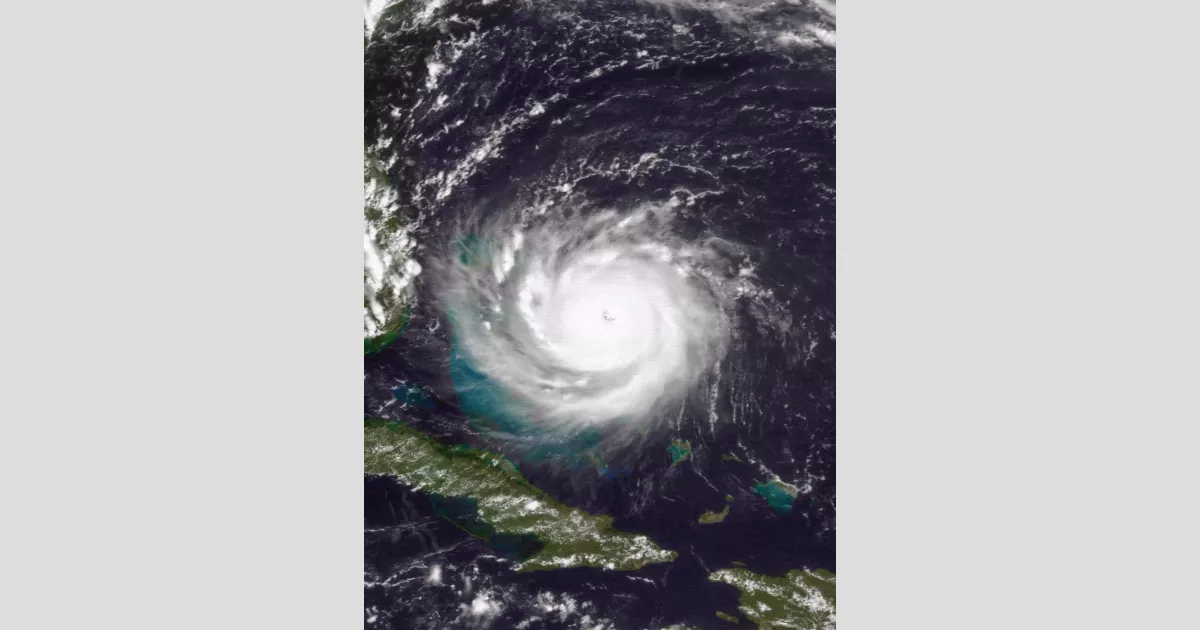Hurricane Andrew, a compact but powerful hurricane in August 1992, remains a landmark event in meteorological history. It stands as the most destructive hurricane to hit Florida in terms of structural damage, holding the record for costliest hurricane until Hurricane Irma in 2015. Reaching Category 5 status, with winds up to 165 mph, Andrew devastated South Florida, particularly Cutler Bay and Homestead, reducing homes to rubble. The hurricane's impact extended to the Bahamas and Louisiana, but its devastation in Florida, totaling $27.3 billion in damages and 65 fatalities, cemented its place as a record-breaking natural disaster.
1935: Hurricane Andrew's Unprecedented Strength in Florida
Hurricane Andrew became the strongest tropical cyclone to make landfall in Florida since the Labor Day hurricane of 1935.
1935: Hurricane Andrew Compared to the Labor Day Hurricane
Some officials in Florida considered Hurricane Andrew, which caused significant damage in 1992, to be the worst storm to hit the state since the Labor Day hurricane of 1935.
1969: Hurricane Andrew Sets Intensity Records
Upon making landfall just northeast of Homestead, Florida, Hurricane Andrew's barometric pressure was the lowest recorded in the United States since Hurricane Camille in 1969.
1989: Criticism of FEMA's Response to Hurricane Andrew
Following Hurricane Andrew in 1992, FEMA faced criticism for its slow response, drawing comparisons to its handling of Hurricane Hugo in 1989. Congressman S. William Green argued that FEMA had not learned from its past mistakes.
1990: Pre-Hurricane Andrew Demographics
The year 1990 serves as a baseline for understanding the demographic changes that occurred in Dade County after Hurricane Andrew hit in 1992.
August 1992: Hurricane Andrew Devastates the Bahamas, Florida, and Louisiana
In August 1992, Hurricane Andrew, a compact but powerful tropical cyclone, caused widespread destruction across the Bahamas, Florida, and Louisiana. It became the most destructive hurricane in Florida's history in terms of structural damage, holding that record until Hurricane Irma in 2017.
1992: Population Shift After Hurricane Andrew
Hurricane Andrew in 1992 triggered a significant population shift in Dade County. An estimated 36,000 people, primarily White families, moved northward to Broward and Palm Beach counties.
1992: Hurricane Andrew's Second Landfall and Impact on the Berry Islands
Hurricane Andrew made its second landfall in the Berry Islands in 1992 as a Category 4 hurricane, causing heavy damage estimated to be in the millions of dollars.
1992: Hurricane Andrew Causes Significant Damage in the Bahamas
In 1992, Hurricane Andrew caused an estimated $250 million in damage throughout the Bahamas, primarily impacting sparsely populated islands. The hurricane destroyed 800 houses, leaving 1,700 people homeless, and caused four deaths.
1992: Hurricane Andrew Causes Widespread Damage and Fatalities
In 1992, Hurricane Andrew caused approximately $25.3 billion in damage in Florida, primarily due to strong winds rather than storm surge. It resulted in 44 deaths, with 15 direct fatalities and 29 indirect deaths.
1993: Retirement of Hurricane Name "Andrew"
Due to the catastrophic impact of Hurricane Andrew in 1992, the World Meteorological Organization retired the name "Andrew" from its rotating Atlantic hurricane name list in the spring of 1993.
July 1994: Rebuilding Efforts After Hurricane Andrew
By July 1994, significant progress had been made in rebuilding efforts following Hurricane Andrew's devastation in 1992. FEMA provided temporary housing and financial aid, while a substantial portion of damaged homes in Homestead and Dade County were restored.
1994: Building Code Effectiveness Analysis Period
The period between 1994 and 2001 was used as a benchmark to assess the effectiveness of the Florida Building Code, implemented in 2002, in mitigating hurricane damage.
1996: Establishment of the Florida Building Codes Study Commission
In 1996, Governor Chiles established the Florida Building Codes Study Commission to evaluate and enhance the building code system in response to the devastation caused by Hurricane Andrew in 1992.
1998: Establishment of the Florida Building Code
The Florida Building Code was established in 1998 and implemented by 2002, replacing local regulations with statewide standards for construction. This initiative was a direct outcome of the lessons learned from Hurricane Andrew in 1992.
1998: Introduction of "Alex" to Hurricane Name List
The name "Alex" was introduced to the rotating Atlantic hurricane name list in 1998, replacing "Andrew," which was retired in 1993 due to the devastating impact of Hurricane Andrew in 1992.
2000: Post-Hurricane Andrew Demographics
By the year 2000, the demographic shifts initiated by Hurricane Andrew in 1992 became evident, with a notable increase in the Hispanic population in southern Dade County, particularly in Homestead.
2001: Building Code Effectiveness Analysis Period
The period between 1994 and 2001 served as a timeframe for evaluating the effectiveness of the Florida Building Code, which came into effect in 2002, in reducing hurricane-related damage.
2002: Implementation of the Florida Building Code
The Florida Building Code, established in 1998 as a response to the devastation of Hurricane Andrew in 1992, came into full effect in 2002.
2004: Effectiveness of the Florida Building Code
Following the hurricanes of 2004 (Charley, Frances, Ivan, and Jeanne), a University of Florida study demonstrated that homes constructed under the new Florida Building Code, implemented in 2002, experienced less damage compared to those built between 1994 and 2001.
2004: Hurricane Andrew's Intensity Re-evaluated
In 2004, a study by Christopher Landsea and other researchers re-evaluated Hurricane Andrew's intensity, concluding that it reached Category 5 status near the Bahamas on August 23 and briefly re-intensified to Category 5 around its South Florida landfall on August 24.
2005: Hurricane Andrew's Cost Ranking Changes Over Time
Although Hurricane Andrew was the costliest hurricane in U.S. history at the time, by 2022 it ranked ninth following Hurricanes Katrina (2005), Ike (2008), Sandy (2012), Harvey (2017), Irma (2017), Maria (2017), Ida (2021), and Ian (2022).
2005: Hurricane Katrina Surpasses Andrew in Cost
In 2005, Hurricane Katrina surpassed Hurricane Andrew as the costliest hurricane to strike the United States.
2005: Hurricanes Test the Florida Building Code
The Florida Building Code's effectiveness was further validated following hurricanes Dennis, Katrina, and Wilma in 2005, as it demonstrated a reduction in damage to structures built under the new code.
2006: Florida Legislature Report on Building Code Effectiveness
In 2006, the Florida Legislature released a report affirming the effectiveness of the Florida Building Code in mitigating hurricane damage, particularly following hurricanes Dennis, Katrina, and Wilma in 2005.
2008: Hurricane Andrew's Cost Ranking Changes Over Time
Although Hurricane Andrew was the costliest hurricane in U.S. history at the time, by 2022 it ranked ninth following Hurricanes Katrina (2005), Ike (2008), Sandy (2012), Harvey (2017), Irma (2017), Maria (2017), Ida (2021), and Ian (2022).
2008: Hurricane Andrew's Economic Impact on the Bahamas
The monetary damage caused by Hurricane Andrew in the Bahamas totaled about $250 million (1992 USD), which is equivalent to $384 million in 2008 USD.
2012: Hurricane Andrew's Cost Ranking Changes Over Time
Although Hurricane Andrew was the costliest hurricane in U.S. history at the time, by 2022 it ranked ninth following Hurricanes Katrina (2005), Ike (2008), Sandy (2012), Harvey (2017), Irma (2017), Maria (2017), Ida (2021), and Ian (2022).
2017: Hurricane Andrew's Cost Ranking Changes Over Time
Although Hurricane Andrew was the costliest hurricane in U.S. history at the time, by 2022 it ranked ninth following Hurricanes Katrina (2005), Ike (2008), Sandy (2012), Harvey (2017), Irma (2017), Maria (2017), Ida (2021), and Ian (2022).
2018: Hurricane Michael: The Next Category 5 Landfall
The United States wouldn't experience another landfall from a hurricane at Category 5 intensity after Hurricane Andrew until Hurricane Michael in 2018.
2021: Hurricane Andrew's Cost Ranking Changes Over Time
Although Hurricane Andrew was the costliest hurricane in U.S. history at the time, by 2022 it ranked ninth following Hurricanes Katrina (2005), Ike (2008), Sandy (2012), Harvey (2017), Irma (2017), Maria (2017), Ida (2021), and Ian (2022).
2022: Hurricane Andrew's Cost Ranking Changes Over Time
Although Hurricane Andrew was the costliest hurricane in U.S. history at the time, by 2022 it ranked ninth following Hurricanes Katrina (2005), Ike (2008), Sandy (2012), Harvey (2017), Irma (2017), Maria (2017), Ida (2021), and Ian (2022).
Mentioned in this timeline
Florida a state in the Southeastern United States is largely...

Hurricane Michael was an exceptionally powerful and destructive tropical cyclone...

Hurricane Katrina a catastrophic tropical cyclone in late August caused...

A cyclone is a large-scale weather system characterized by inward-spiraling...
Trending

6 months ago Aaron Rodgers and Mike Tomlin: An Unlikely Collaboration in Pittsburgh?

Chevy Chase born Cornelius Crane Chase is a prominent American comedian actor and writer His career took off with his...
5 months ago SharePoint Server Hackers Employ Ransomware; Microsoft Disrupts Exploitation of Vulnerabilities

2 months ago Justin Tucker's NFL Suspension Ends; Potential Teams Include Packers, Rams, and Falcons.
Katherine LaNasa is an American actress known for her role as Nurse Dana Evans in the HBO Max medical drama...

Raheem Morris is an American professional football coach currently serving as the head coach for the Atlanta Falcons He has...
Popular

Stranger Things created by the Duffer Brothers is a popular...

XXXTentacion born Jahseh Dwayne Ricardo Onfroy was a controversial yet...

Kelsey Grammer is an accomplished American actor producer and singer...

Candace Owens is an American conservative political commentator and author...

Bernie Sanders is a prominent American politician currently serving as...

Melania Trump a Slovenian-American former model has served as First...
